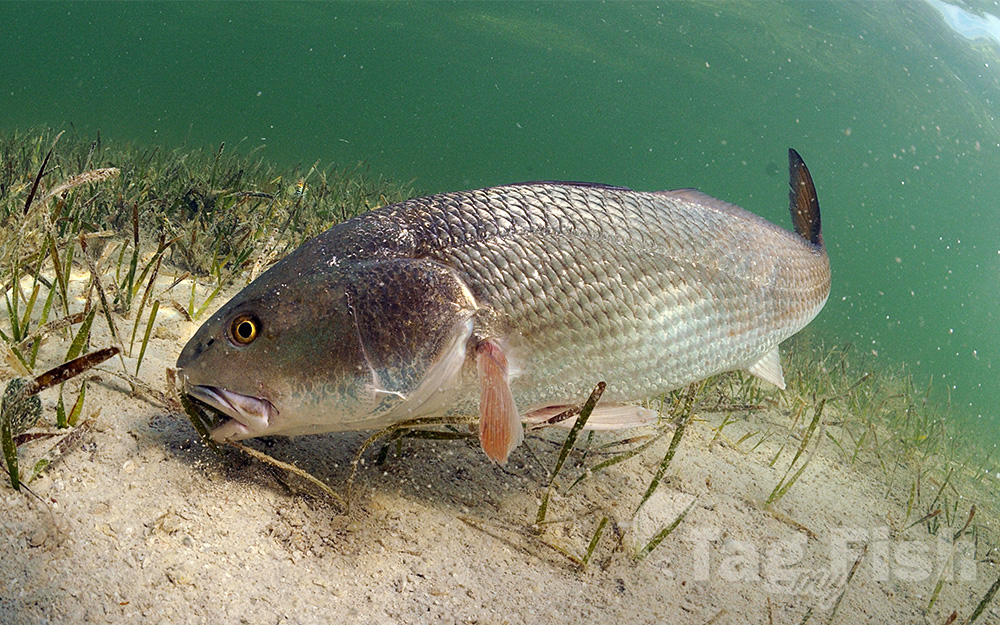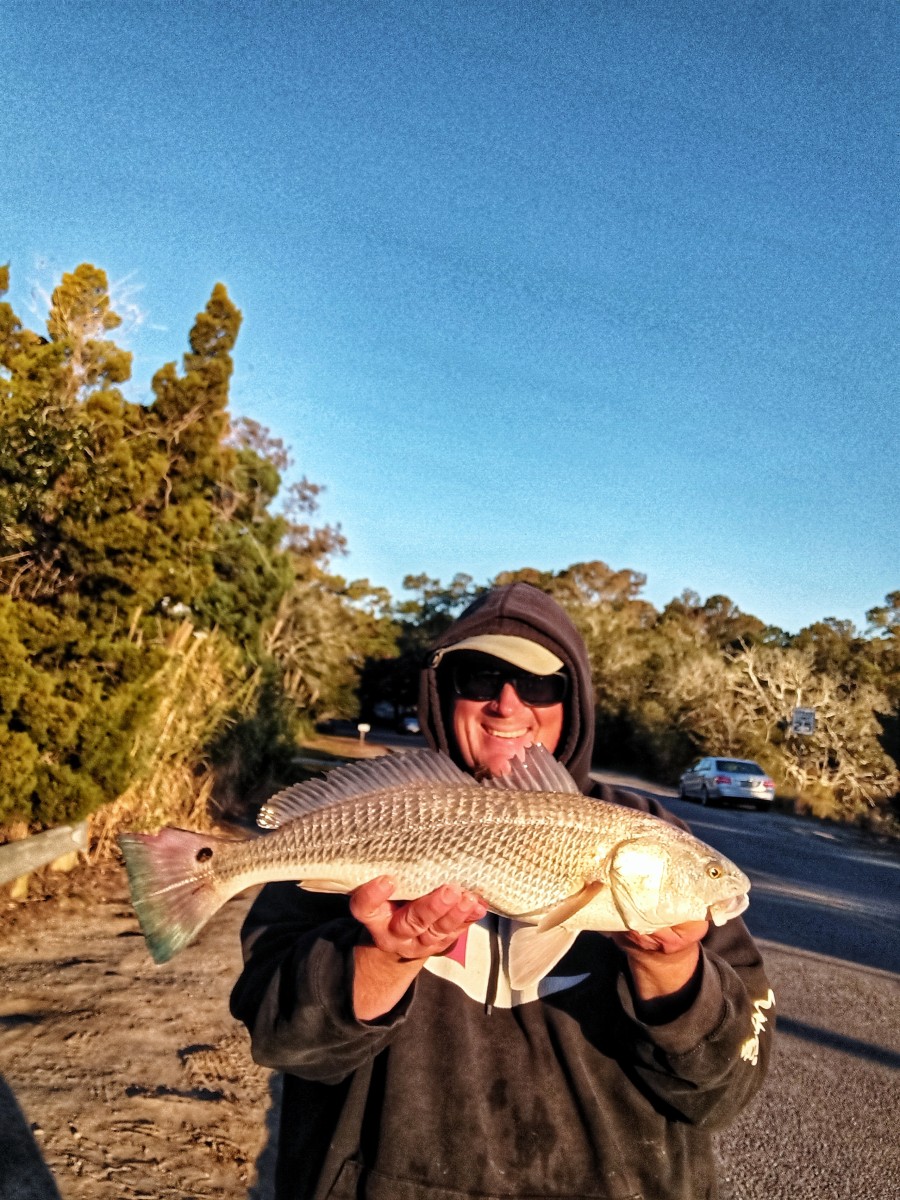Red drum
(Sciaenops ocellatus)

Classification
General data
The red drum (Sciaenops ocellatus), also known as redfish, channel bass, puppy drum, spottail bass, or simply red, is a game fish found in the Atlantic Ocean from Massachusetts to Florida and in the Gulf of Mexico from Florida to northern Mexico. It is the only species in the genus Sciaenops.
The red drum is related to the black drum (Pogonias cromis), and the two species are often found near to each other; they can interbreed and form a robust hybrid, and younger fish are often indistinguishable in flavor.
Characteristics
Mature red drum (S. ocellatus) showing characteristic spot(s) at the base of the tail: This one is not a bull red because it is shorter than 27 inches (0.69 m).
Red drum are a dark red color on the back, which fades into white on the belly. The red drum has a characteristic eyespot near the tail and is somewhat streamlined. Three-year-old red drum typically weigh 6-8 lb. The largest red drum on record weighed just over 94 lb and was caught in 1984 on Hatteras Island. Male red drum make a knocking or drumming sound during spawning by vibrating their swim bladders.
The most distinguishing mark on the red drum is one large black spot on the upper part of the tail base. Having multiple spots is not uncommon for this fish, but having no spots is extremely rare. As the fish with multiple spots grow older, they seem to lose their excess spots. Scientists believe that the black spot near their tail helps fool predators into attacking the red drum\\\\\\\\\\\\\\\'s tail instead of its head, allowing the red drum to escape. The red drum uses its senses of sight and touch, and its downturned mouth, to locate forage on the bottom through vacuuming or biting. On the top and middle of the water column, it uses changes in the light that might look like food. In the summer and fall, adult red drum feed on crabs, shrimp, and mullet; in the spring and winter, adults primarily feed on menhaden, mullet, pinfish, sea robin, lizardfish, spot, Atlantic croaker, and mudminnows.
Distribution
Red drum naturally occur along the eastern and southern Atlantic and Gulf of Mexico coasts of Louisiana, Texas, Alabama, Mississippi, Florida, Georgia, the Carolinas, and Virginia. They are a highly prized game fish in the Gulf of Mexico. Aquaculture activities involving them occur around the world. Immature red drum prefer grass marsh areas of bays and estuaries when available. Both younger mature red drum (3-6 years of age) and bull red drum prefer rocky outcroppings including jetties and manmade structures, such as oil rigs and bridge posts. Around this type of structure, they are found throughout the water column.




















